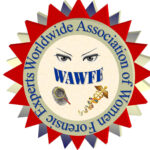none
Isabel Navarro Vera
Technical Director, Citogen
In the recent years, working as technical director and head of the forensic genetics department in Citogen, Dr. Isabel Navarro Vera has focused her work specially in implementing and validating the use of MPS applied to forensics and in the application of next generation sequencing technologies to Missing Persons projects, including STRs, mtDNA and FIGG studies.


